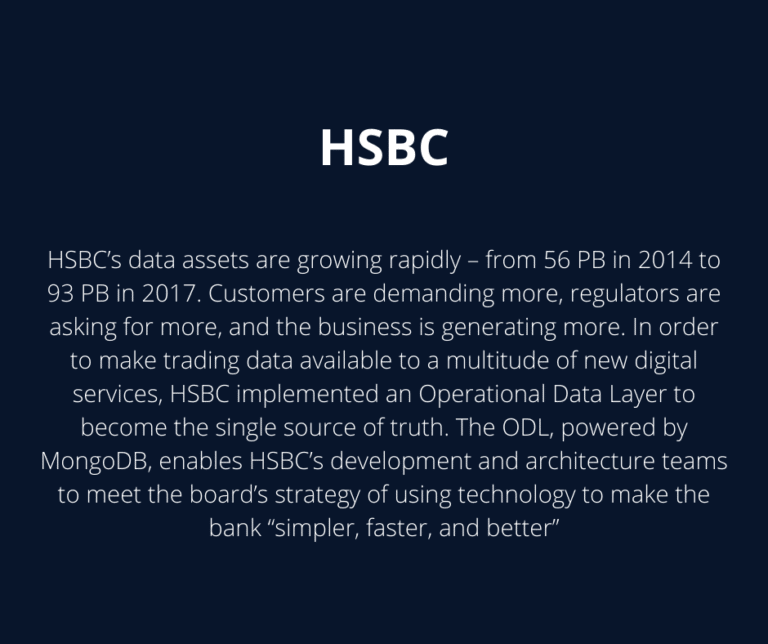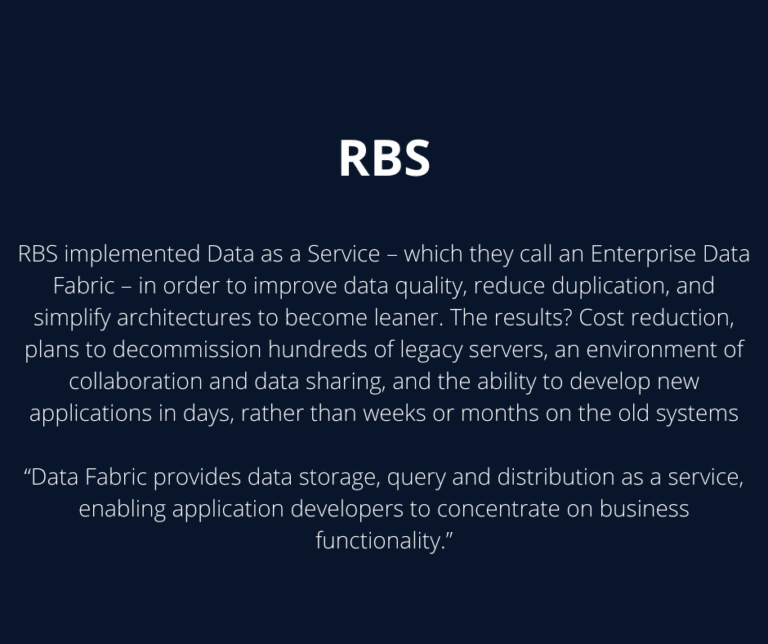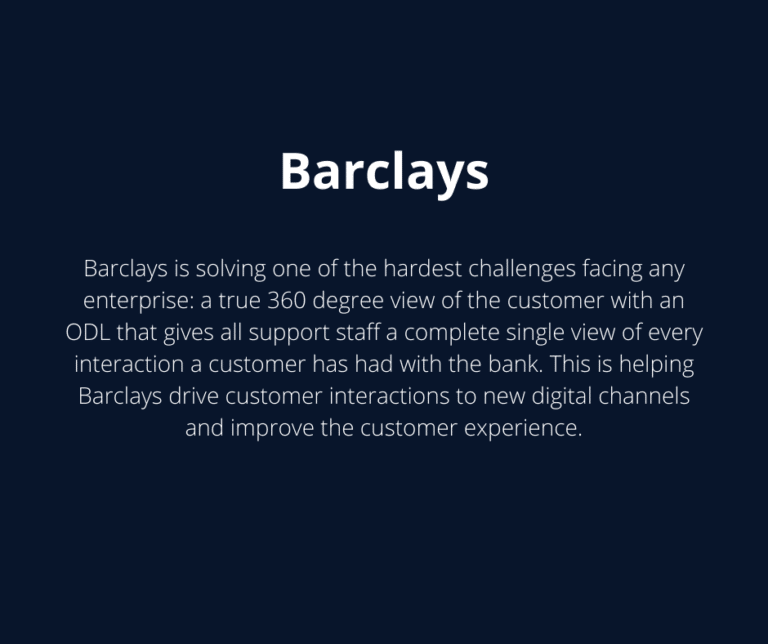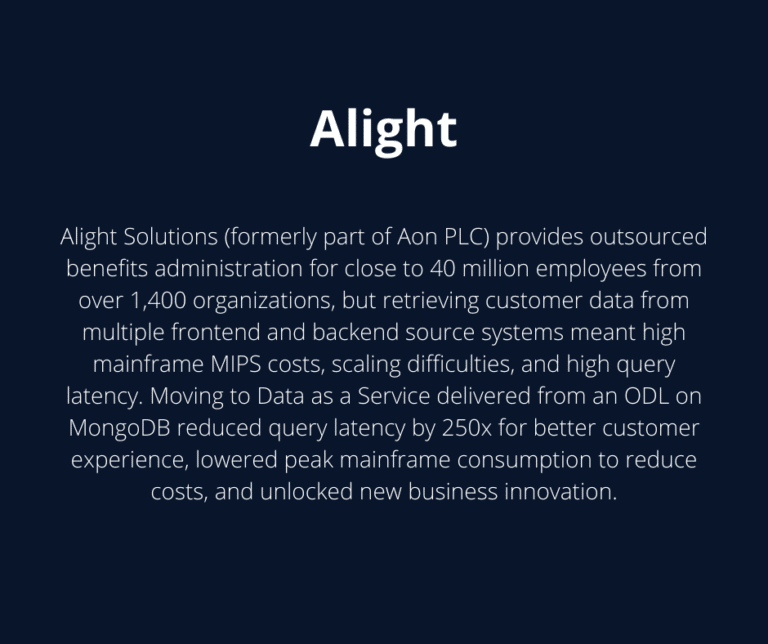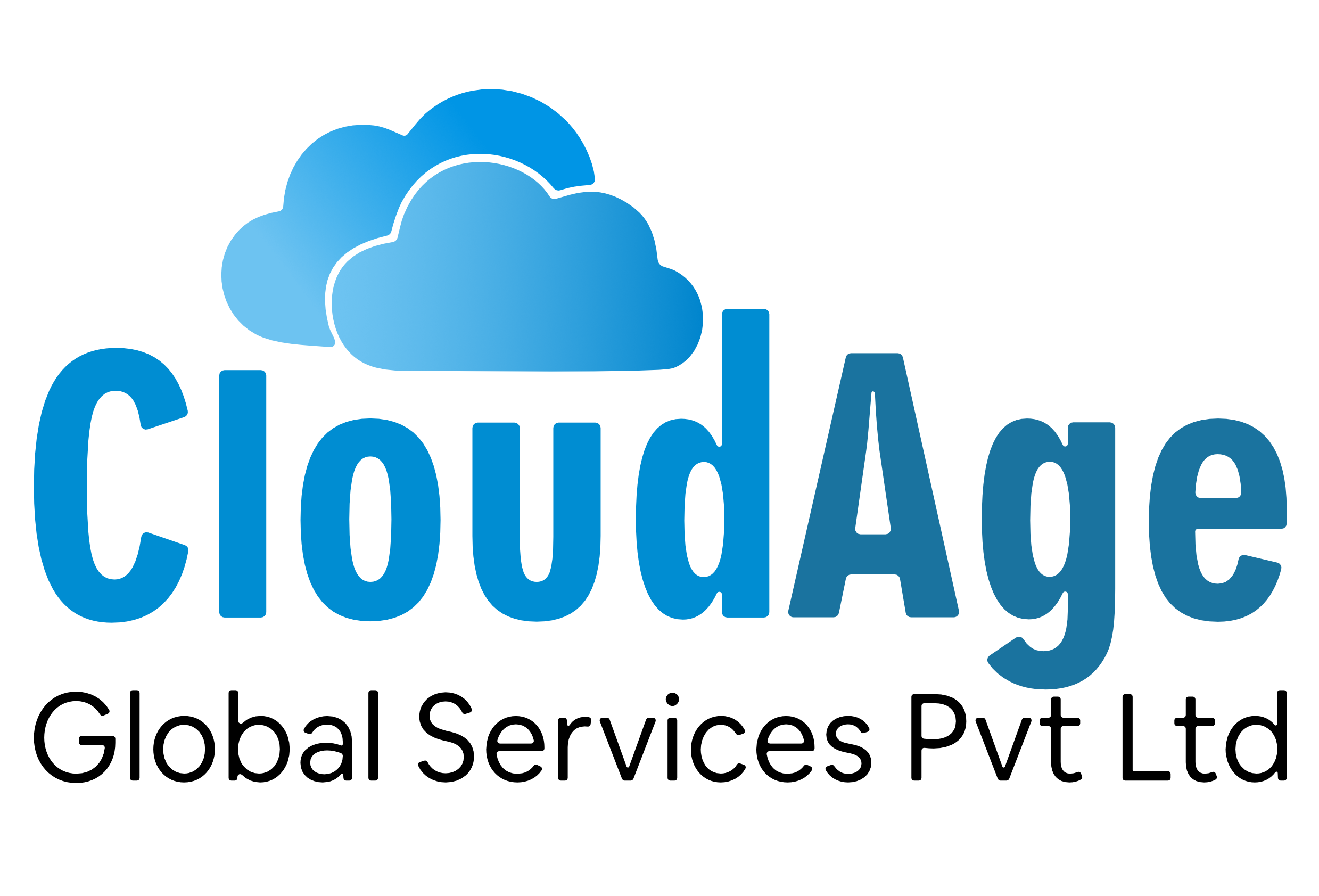Data as a Service
Your company’s data should be its greatest asset. It ought to be easy to develop new applications based on your data and to generate essential business insights – but for too many, legacy systems and databases make this difficult or impossible.
Did You Know?
Organizations are turning to a new approach: Data as a Service. This strategic initiative is an investment in consolidating and organizing your enterprise data in one place, then making it available to serve new and existing digital initiatives. Data as a Service becomes a system of innovation, exposing data as a cross-enterprise asset. It unlocks data from legacy systems to drive new applications and digital systems, without the need to disrupt existing backends.
Challenges
The keys to success in the digital age are how quickly you can build
innovative applications, scale them and gain insights from the data they
generate – but legacy systems hold you back.
Lack of Agility
Demands for faster time to market and higher productivity are held back by traditional rigid relational data models, waterfall development, and the wariness of altering existing systems.
Data Locked in Silos
No complete view of your data? That means poor customer experience, missing insights, and slower app development.
Poor Data Accessibility
Existing systems aren’t built for the modern access patterns of 24/7 customer experiences on web, mobile, and social – and they’re single points of failure.
Limited Data Support
Demands for faster time to market and higher productivity are held back by traditional rigid relational data models, waterfall development, and the wariness of altering existing systems.
Solution
Deliver Data as a Service within your organization to speed
development, integrate data, and improve accessibility and performance.

The path to Data as a Service is to implement an Operational Data Layer (ODL). This data
layer sits in front of legacy systems, enabling you to meet challenges that the existing
architecture can’t handle – without the difficulty and risk of a full rip and replace. Depending
on your requirements, an ODL can draw data from one or many source systems and power
one or many consuming applications. An ODL can be used to serve only reads, accept writes
that are then written back to source systems, or evolve into a system of record and eventually
replace legacy systems entirely and simplify the enterprise architecture.
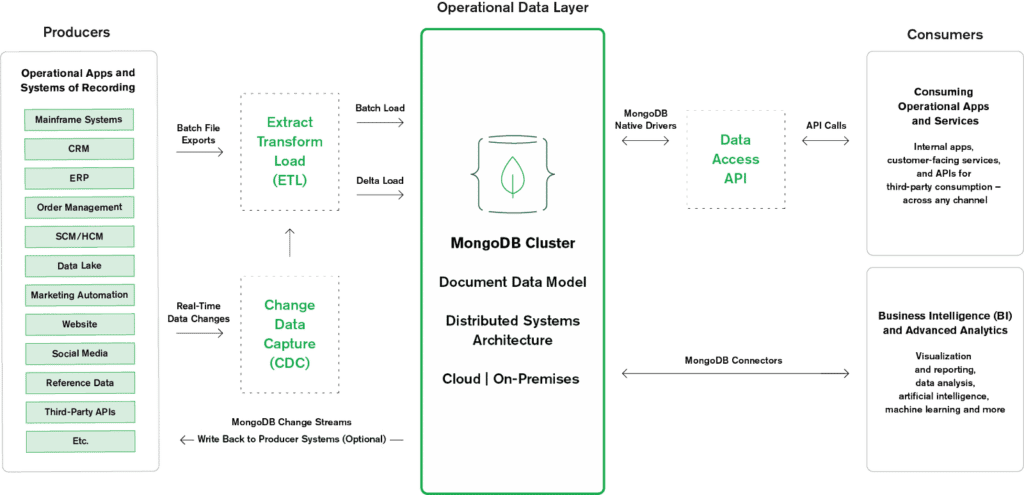
How
Successfully building an ODL and delivering Data as a Service requires a combination of people, process, and technology. Here’s how MongoDB can help:
People and Process
Data Layer Realization
MongoDB has developed a tried and tested approach to constructing an Operational Data Layer. The Data Layer Realization methodology helps you unlock the value of data stored in silos and legacy systems, driving rapid, iterative integration of data sources for new and consuming applications. Data Layer Realization offers the expert skills of MongoDB’s consulting engineers but also helps develop your own in-house capabilities, building deep technical expertise and best practices.

This process for constructing an Operational Data Layer has been successfully implemented with many customers. Starting with clear definitions of project scope and identifying required producing and consuming systems is the first step to ensure success. Based on these findings, we assign data stewards for clear chains of responsibility, then begin the process of developing and deploying the Operational Data Layer with loading and merging, data access API creation, validation, and optimization. This process is iterative, repeating to add new access patterns and consuming apps or enrich the ODL with new data sources.
A successfully implemented ODL is a springboard for the agile implementation of new business requirements. MongoDB can help drive continued innovation through a structured program that facilitates prototyping and development of new features and applications.
Technology
Why the MongoDB Intelligent Operational Data Platform?
When you choose MongoDB as the foundation for DaaS, you’re investing in the best technology for your system of innovation.
MongoDB is the best way to work with data
Lack of Agility
MongoDB’s document model makes it simple to model – or remodel – data in a way that fits the needs of your applications.
Data Locked in Silos
Unifying data in MongoDB means you can write less code and get better performance when accessing data.
Poor Data Accessibility
A flexible data model is essential to integrate multiple source systems to offer a unified DaaS: adapt your schema at any time, without disruption.
Limited Data Support
Query data in any way your applications require, meeting the demands of different workloads while providing ACID guarantees to ensure data integrity.
MongoDB lets you intelligently put data where you need it
Availability
Built-in redundancy and self-healing recovery ensure service continuity of DaaS.
Scalability
MongoDB ensures that you can scale your DaaS to store all your enterprise data and serve the most intensive workloads and demanding users.
Workload Isolation
Run operational apps while also serving analytics and BI to unlock critical insights in real-time – all on a single data platform.
Data Locality
Distribute your MongoDB cluster globally for worldwide DaaS coverage and regulatory compliance.
MongoDB enables data access and APIs
Consuming systems require powerful and secure access methods to the data in the ODL. MongoDB’s drivers provide access to a MongoDB-based ODL from the language of your choice. Data as a Service reaches its fullest potential when you present a common Data Access API for applications; this layer can be custom-built, or MongoDB Stitch can be used to expose access methods with a built-in rules engine for fine-grained security policies.
Data as a Service should also be available for analytics. The Connector for Business Intelligence allows analysts to connect to a MongoDB ODL with their BI and visualization tools of choice, or MongoDB Charts can connect directly to the ODL for native visualization. The Connector for Apache Spark exposes MongoDB data for use by all of Spark’s libraries, enabling advanced analytics such as machine learning processes.

Use Cases
Single View
DaaS is perfectly suited to generating a Single View of your business. When you unify your enterprise data and make it available as Data as a Service, the next step is to build an application to expose a single view of that data to those who need it. Better real-time visibility across the business, improved customer service, and insight for more intelligent cross-sell and up-sell opportunities are all within reach.
Mainframe Offload
Mainframes and other legacy systems aren’t suited for modern applications. Rigidity, downtime requirements, and high costs mean that you’re held back from innovating for the business. By implementing an Operational Data Layer in front of your legacy systems, you can build new apps faster, deliver great performance with high availability, meet new regulatory demands, and make it drastically easier to serve mainframe data to new digital channels – all while reducing MIPS and hardware upgrade costs.
Analytics
Providing Data as a Service doesn’t just support operational applications. It can also power the analytics that makes sense of your data – faster than a traditional data warehouse. Whether you’re analyzing your unified enterprise data set for business insights, running real-time analytics to take action based on algorithms, or reviewing usage patterns to inform application roadmaps, an Operational Data Layer can serve analytical needs with the appropriate workload isolation to ensure that there is no performance impact on production workloads.
And More
Building a mobile application to reach your customers at any place, any time? Putting machine learning to work on your enterprise data? Building recommendation engines, adding social components to your UI, or personalizing content in real-time? These applications, and any others you need to build, benefit from being able to access Data as a Service. What innovation could you power with all of your enterprise data easily and securely available in one place?
